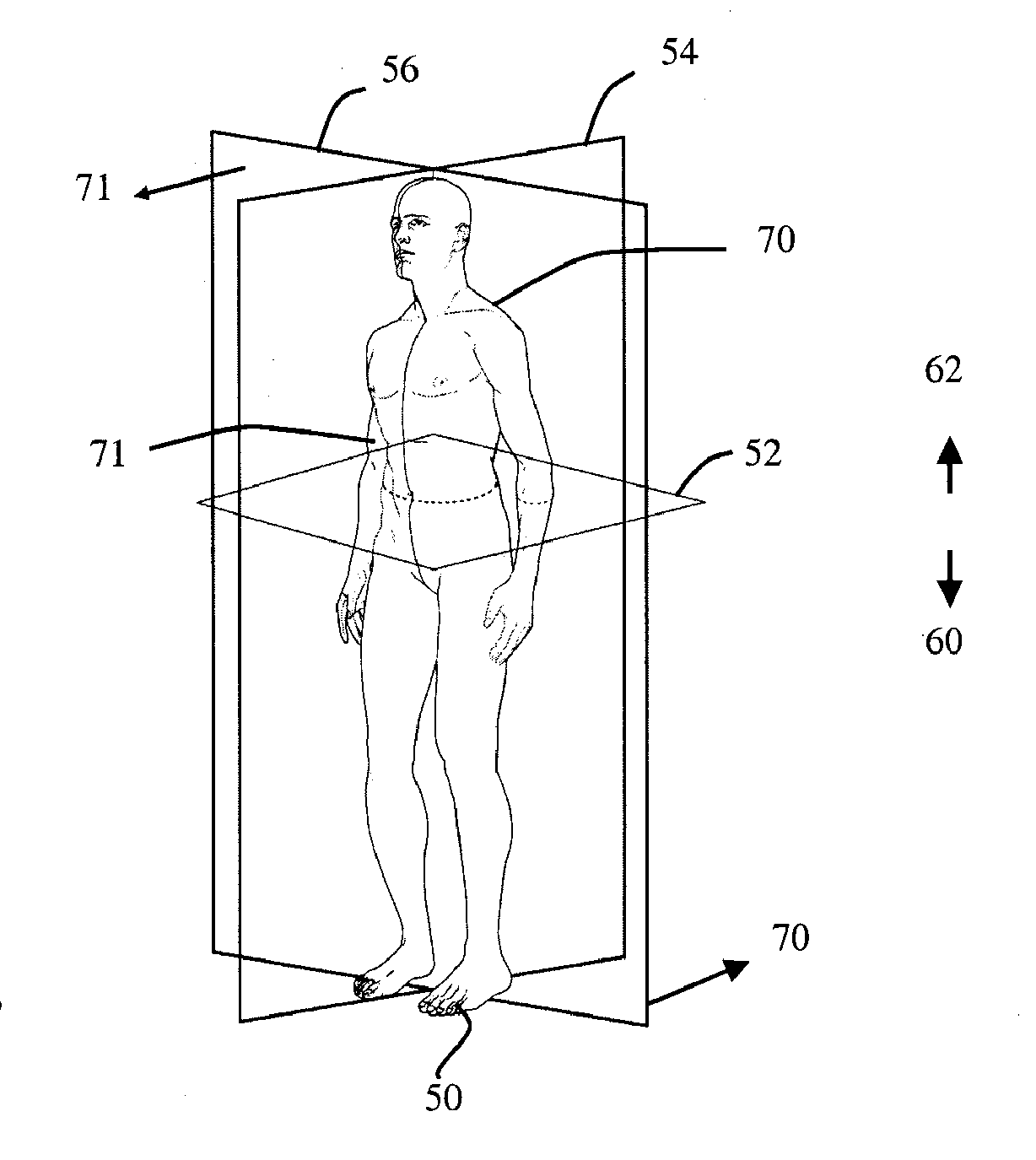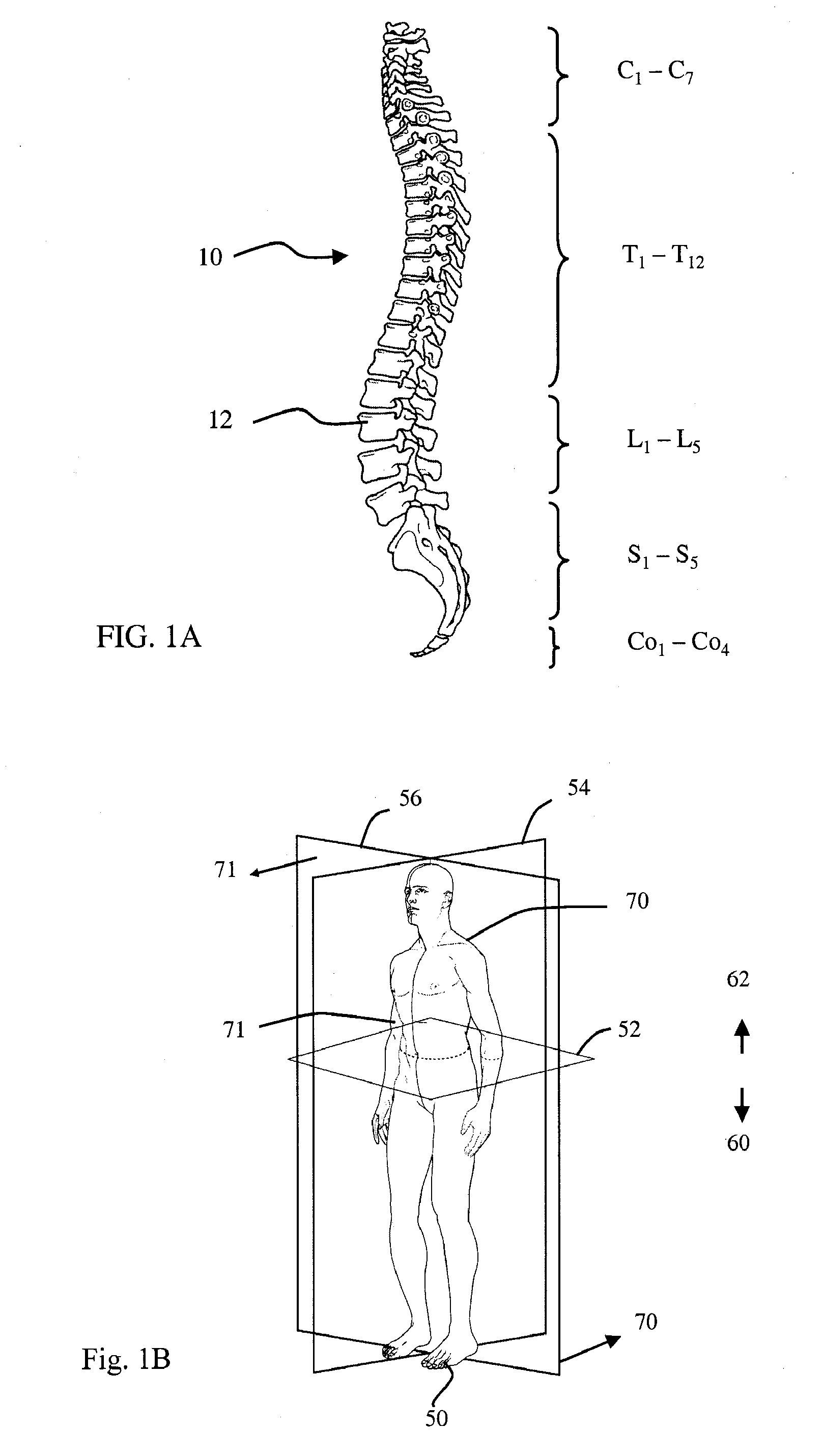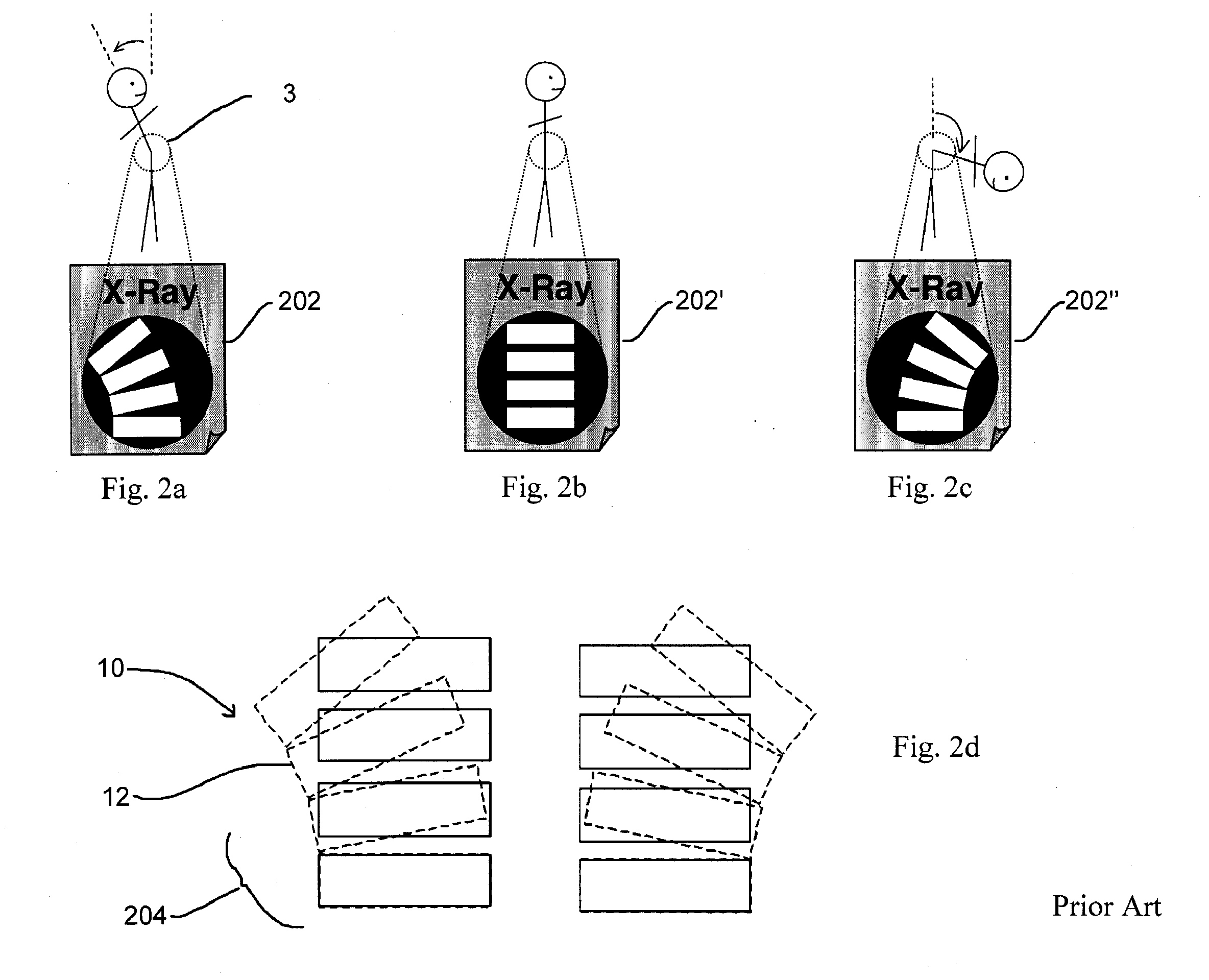Devices, Systems and Methods for Measuring and Evaluating the Motion and Function of Joint Structures and Associated Muscles, Determining Suitability for Orthopedic Intervention, and Evaluating Efficacy of Orthopedic Intervention
- Summary
- Abstract
- Description
- Claims
- Application Information
AI Technical Summary
Benefits of technology
Problems solved by technology
Method used
Image
Examples
example 1
Detection of Pseudarthrosis
[0187] Pseudarthrosis is the condition that results from a “failed” spinal fusion, wherein there is motion in a fused spinal joint where there should be none. Because of the +5° precision of current measurement methods, the United States Food and Drug Administration advocates the standard that there can be no definitive diagnosis of pseudarthrosis unless observed Range of Motion (ROM) is 5° or greater. However there are many suspected cases of pseudarthrosis where there is observable motion, however this motion is less than 5°. With the present invention, there could be definitive detection of pseudarthrosis with any observed motion of greater than 1°. This will dramatically reduce the number of inconclusive results, which today occur with any cases where observed motion is between 1-4°. Alternatively pseudarthrosis could be more definitively ruled out in all cases where the observed motion is less than 1°, whereas ruling out pseudarthrosis is currently i...
example 2
Level-Specific Detection of Hypermobility
[0188] When patients are suspected of having spondololysthesis, spinal kinematic studies are prescribed to measure the ROM using traditional flexion / extension X-rays with the intention of detecting if a joint is “hypermobile”, in which case spondololysthesis may be diagnosed. The current medical practice in the United states when spondololysthesis is suspected is to perform a spinal kinematic study to determine if the observed ROM is greater than 11° of rotation or 4 mm of translation. If such a diagnostic result is observed in a patient, surgery is often indicated. This same threshold applies to all vertebrae, no matter whether they are in the lumbar, thoracic, or cervical spine. However it is well-documented that the normal physiologic ROM varies by 300% between different levels (for example, among healthy patients mean ROM at L5 / S1 is 5° whereas at L1 / L2 it is 15°). The improved precision afforded by the present invention allows for level...
example 3
Detection of Vertebral Stiffness
[0189] With the current standard of care that has a precision of ±5°, it is impossible to detect stiffness. However with the present invention, stiffness has been detected among degenerative disc disease sufferers and has been observed to be absent among normal healthy volunteers. If a subject presents with stiffness, this could have very serious ramifications for the surgeon. If a surgeon were to be considering an artificial disc for a patient with confirmed stiffness, the surgeon would have to have confidence that it is the disc, not the environment around the vertebrae, that is causing the stiffness. Currently this is impossible to determine, but with the present invention such data would be available and would affect whether or not artificial discs would be indicated for patients suffering from intervertebral stiffness.
PUM
 Login to View More
Login to View More Abstract
Description
Claims
Application Information
 Login to View More
Login to View More - R&D
- Intellectual Property
- Life Sciences
- Materials
- Tech Scout
- Unparalleled Data Quality
- Higher Quality Content
- 60% Fewer Hallucinations
Browse by: Latest US Patents, China's latest patents, Technical Efficacy Thesaurus, Application Domain, Technology Topic, Popular Technical Reports.
© 2025 PatSnap. All rights reserved.Legal|Privacy policy|Modern Slavery Act Transparency Statement|Sitemap|About US| Contact US: help@patsnap.com



